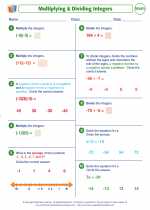Trigonometric Functions
Trigonometric functions are mathematical functions that relate the angles of a right-angled triangle to the lengths of its sides. These functions are widely used in geometry, physics, engineering, and many other fields. The main trigonometric functions are sine, cosine, and tangent, often abbreviated as sin, cos, and tan, respectively.
Sine Function (sin)
The sine of an angle in a right-angled triangle is defined as the ratio of the length of the side opposite the angle to the length of the hypotenuse. In a right triangle with sides of lengths a, b, and c, where c is the hypotenuse and θ is the angle opposite side a, the sine function is given by:
sin(θ) = a / c
Cosine Function (cos)
The cosine of an angle in a right-angled triangle is defined as the ratio of the length of the side adjacent to the angle to the length of the hypotenuse. In the same right triangle as above, the cosine function is given by:
cos(θ) = b / c
Tangent Function (tan)
The tangent of an angle in a right-angled triangle is defined as the ratio of the length of the side opposite the angle to the length of the side adjacent to the angle. In the same right triangle as above, the tangent function is given by:
tan(θ) = a / b
Study Guide
When studying trigonometric functions, it's important to understand the following key concepts:
- The definitions of sine, cosine, and tangent in a right-angled triangle.
- The relationships between the trigonometric functions and the sides of a right-angled triangle.
- The properties of trigonometric functions, such as their periodicity and range.
- The graphs of trigonometric functions and their key characteristics, such as amplitude and period.
- The inverse trigonometric functions and their use in solving trigonometric equations.
It's also important to practice applying trigonometric functions to solve problems involving angles and side lengths in right-angled triangles, as well as to analyze and interpret trigonometric graphs.
By mastering these concepts and practicing with a variety of problems, you can develop a strong understanding of trigonometric functions and their applications.
.◂Math Worksheets and Study Guides Eighth Grade. Integer operations
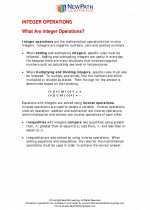
 Worksheet/Answer key
Worksheet/Answer key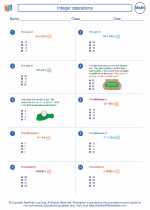
 Worksheet/Answer key
Worksheet/Answer key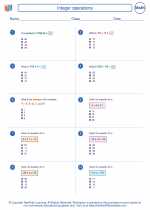
 Worksheet/Answer key
Worksheet/Answer key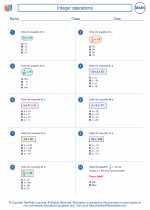
 Worksheet/Answer key
Worksheet/Answer key